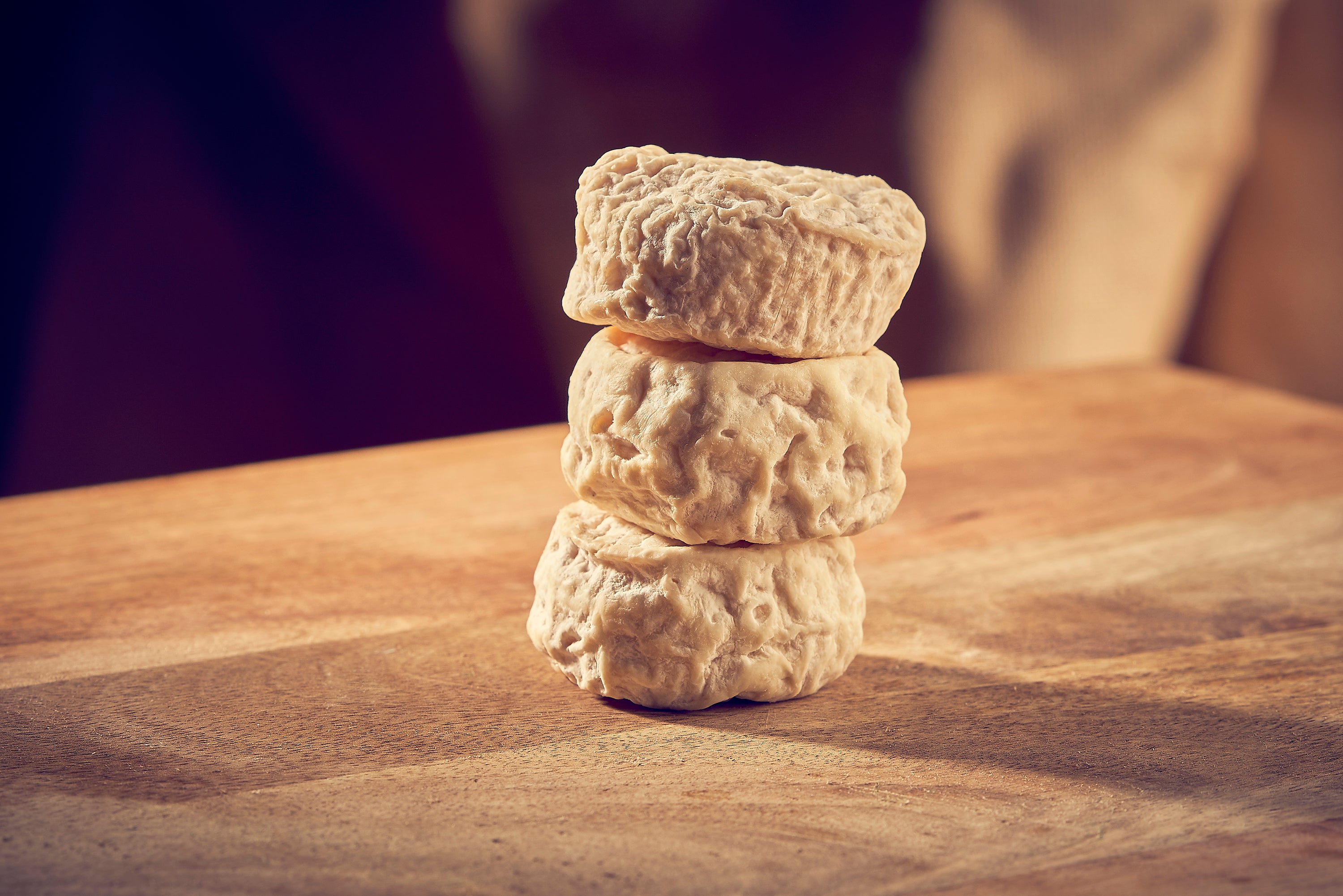
You know cheese is mould don't you? Mould is an integral part of the cheesemaking process. Think Camembert or Blue cheese. Now think of them both without mould... then stop.
The two moulds most frequently used in cheese are penicillium camemberti and penicillium roqueforti. The moulds used in cheese production are common moulds that are widespread throughout nature. As types of fungi, they belong to the same family as mushrooms and yeast. Now, time for a disclaimer. I am definitely not a microbiologist. Therefore, I will not dig deep into the biological impact of different strains of mould. Instead, I will discuss the flavour impact of mould on cheese.
Cheese is a world that I have been lucky enough to inhabit for the past two decades. I have lovingly explored the sum of all of its parts, including the mould. While I do not know the full biology of mould, I do know that mould is flavour. Flavour that the cheesemaker decided to add in the first place, and flavour embedded through the environment the cheese was born in.
Interestingly enough, one of my favourite cheese legends tells the tale of how blue cheese was first discovered by a shepherd who left his milk and rye bread lunch in a limestone cave while running after a young french girl through the ‘curvy’ and hilly Auvergne region. When he eventually returned to his cave a few weeks later, he found his milk had not only turned into cheese, but had also developed a mouldy bluish colour and a pungent taste. Nature, and an absent minded shepherd, created Roquefort for you!
Today, the science behind the cheese making process is second nature to cheesemakers and they understand that these fungi and yeast produce special enzymes that in turn break down and absorb organic substances. When used in blue cheese production for example, these enzymes literally eat away at the cheese, turning complex molecules into simpler ones. As a result, the fibrous structure of cheese is transformed into a more creamy texture, and the complex flavour and assertive aroma we know and love are created.
So thanks to nature, biochemists and cheesemakers, the transformation of milk is far more exciting than just a set curd!
When discussing the mould in cheese we are talking about such a big variety of moulds. And almost none of them will kill you. The French people call it the “Noble Rot”. And their acceptance and even expectation in the way cheese looks is vastly different from ours. When I was in Paris a few years back, I visited a friend who was managing the cheese section in a very attractive delicatessen. I was marvelling at his display and the extraordinary variety of cheeses he was carrying, when I spotted his goat’s cheese section. They were not pristine white as we like them here in Australia. To my surprise and wonder they were almost completely blue! I might have spent too many years in Australia as I was myself a little dumbfounded and asked him how he was expecting people to buy these cheeses in that particular state? He responded that it was exactly as people were expecting these to be. Blue mould on these Chabichou meant extra flavour and character... Point taken!
Yes, mould is flavour. We have a maturing room in Adelaide where we allow our semi-hard and hard cheeses from various parts of the world to age as gracefully as possible. I am always in awe of how beautiful these cheeses look. Afterall, it’s only milk, a bit of salt and some very clever artisans' ability to use very old cheesemaking traditions?
What is striking in that particular room is the fact that each cheese is bringing its intrinseque set of moulds. Ossau Iraty, sheep’s milk cheese from the Basque country (and said to be one of the first cheeses ever made), is a good example of what it brings to that room. In the Pyrenees, there is this vibrant red mould called Sporendonema casei.This mould is totally foreign to our Murray Bridge cloth-bound cheddars sitting not far away from the Pyrennees guys. Then magic happens. Sporendomena casei is floating around and happy to land on the Murray Bridge cheddars that are oh so very happy to be acquainted with it. The result is DIVINE! Our cheddars are now tasting like no others with a complexity that now extends beyond our borders. Exciting times for us and ultimately for you, as the proof is now in the cheese with more flavour and character.
Now let’s explore the murky depths of our fridges when you can suddenly spot a mould on your cheese that was definitely not there when you bought it… rings a bell? By and large, dont worry about it. Unless your fridge is screaming for a big clean, chances are, the fact that your cheese is producing mould is telling you that your cheese is alive! I always think the worst thing that could happen to you is forgetting a piece of cheese and discovering it weeks later, totally unchanged… now, that’s scary!
In a lot of ways, the job of the cheesemaker and the cheesemonger is mould maintenance.
And apart from the super fresh cheeses such as mozzarella, feta, or haloumi, which you can throw away as soon as you spot mould on it, you want to make sure the right kind of mould is growing in the right place at the right time and intervening when necessary. And more often than not, it means cutting off the spot that grossed you out. If you are still grossed out? Well, throw it out, as we know the power of the mind can definitely ruin the whole experience for you!

Comments (0)
Back to What's Happening in our World of Cheese